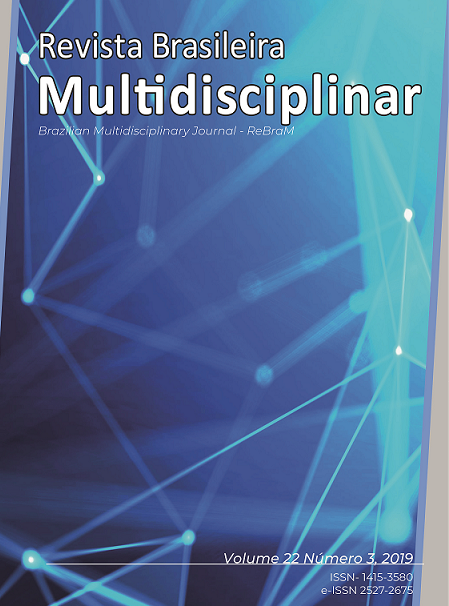Análise da resistência à compressão uniaxial de compósitos cimentícios com bagaço e cinzas da cana-de-açúcar
Main Article Content
Abstract
Atualmente, a cana-de-açúcar é o produto mais produzido e exportado no Brasil, gerando uma grande quantidade de resíduos após o aproveitamento dos produtos. Este estudo tem como objetivo avaliar a adição de fibras do bagaço de cana-de-açúcar em compósitos cimentícios. Os corpos de prova foram submetidos a ensaios de compressão uniaxial para verificar a resistência, onde foi constatado que as fibras consideradas finas apresentaram aumento de resistência à compressão devido ao acréscimo da fração mássica e as fibras consideradas grossas apresentaram diminuição com o acréscimo da fração mássica no compósito cimentício. Após o ensaio observou-se que a resistência à compressão dos materiais que apresentavam fibras de bagaço de cana-de-açúcar foi inferior ao material sem fibras, contudo, o uso das fibras pode ser levado em consideração para algumas aplicações que não necessitam de grandes valores de resistência, gerando benefícios como redução da densidade do material e diminuição no uso de cimento.
Downloads
Download data is not yet available.
Article Details
How to Cite
Lages, M. da S., & Amaral, M. M. S. (2019). Análise da resistência à compressão uniaxial de compósitos cimentícios com bagaço e cinzas da cana-de-açúcar. Revista Brasileira Multidisciplinar, 22(3), 152-160. https://doi.org/10.25061/2527-2675/ReBraM/2019.v22i3.719
Section
Comunicação Breve
1437/5000
The author (s) authorize the publication of the article in the journal;
• The author (s) warrant that the contribution is original and unpublished and that it is not in the process of being evaluated in other journal (s);
• The journal is not responsible for the opinions, ideas and concepts issued in the texts, as they are the sole responsibility of the author (s);
• Publishers have the right to make textual adjustments and to adapt the article to the rules of publication.
Authors retain the copyright and grant the journal the right of first publication, with the work simultaneously licensed under the Creative Commons Attribution License, which allows the sharing of work with acknowledgment of authorship and initial publication in this journal.
Authors are authorized to take additional contracts separately, for non-exclusive distribution of the version of the work published in this journal (eg publish in institutional repository or as book chapter), with acknowledgment of authorship and initial publication in this journal.
Authors are allowed and encouraged to publish and distribute their work online (eg in institutional repositories or on their personal page) at any point before or during the editorial process, as this can generate productive changes as well as increase the impact and citation of the published work (See The Effect of Free Access) at http://opcit.eprints.org/oacitation-biblio.html
• The author (s) warrant that the contribution is original and unpublished and that it is not in the process of being evaluated in other journal (s);
• The journal is not responsible for the opinions, ideas and concepts issued in the texts, as they are the sole responsibility of the author (s);
• Publishers have the right to make textual adjustments and to adapt the article to the rules of publication.
Authors retain the copyright and grant the journal the right of first publication, with the work simultaneously licensed under the Creative Commons Attribution License, which allows the sharing of work with acknowledgment of authorship and initial publication in this journal.
Authors are authorized to take additional contracts separately, for non-exclusive distribution of the version of the work published in this journal (eg publish in institutional repository or as book chapter), with acknowledgment of authorship and initial publication in this journal.
Authors are allowed and encouraged to publish and distribute their work online (eg in institutional repositories or on their personal page) at any point before or during the editorial process, as this can generate productive changes as well as increase the impact and citation of the published work (See The Effect of Free Access) at http://opcit.eprints.org/oacitation-biblio.html





